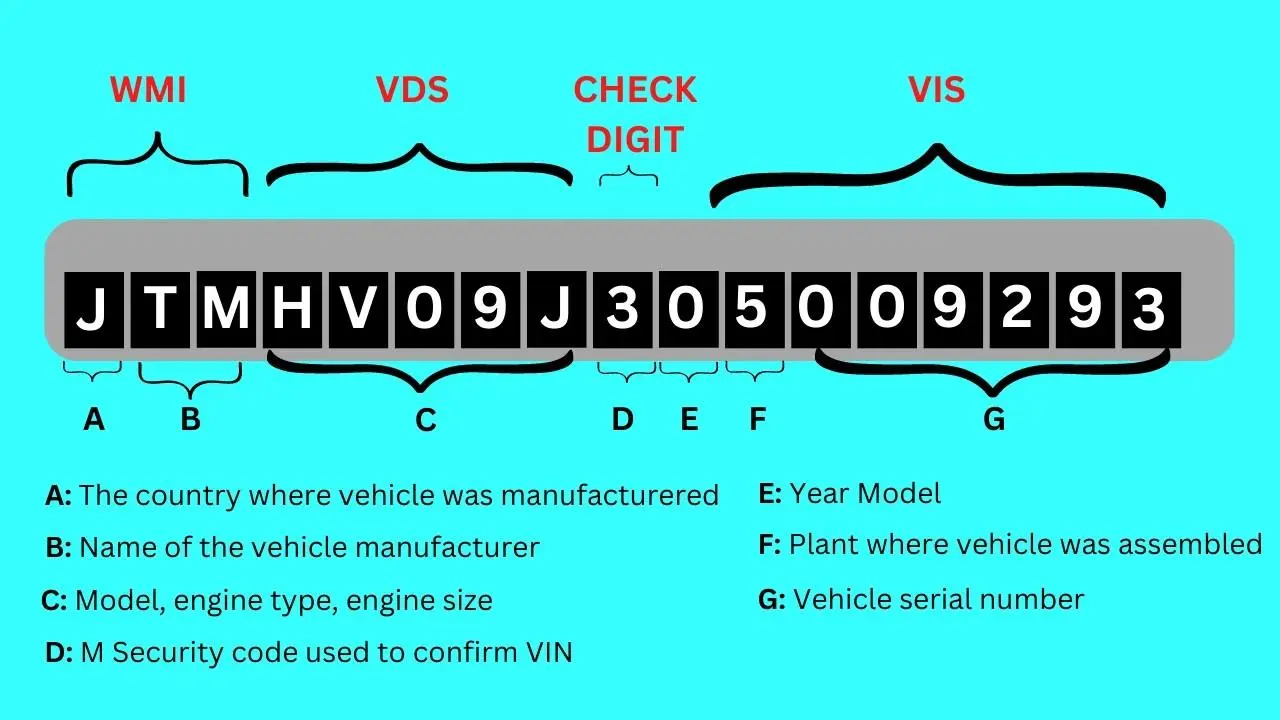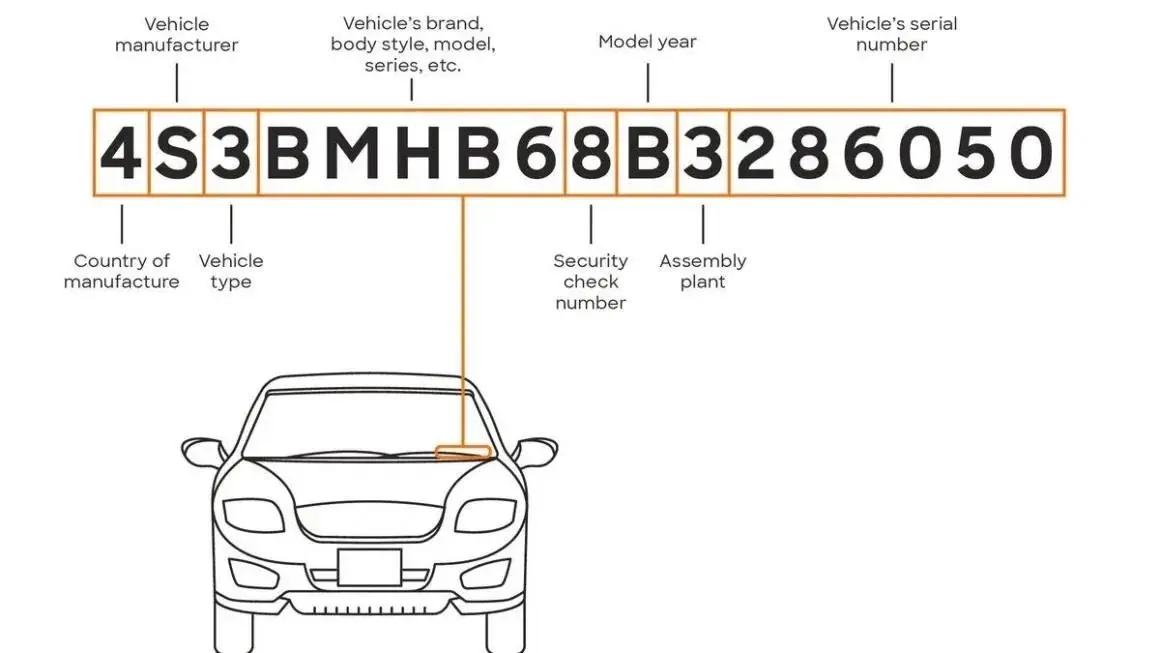Did you know that every car built after 1981 has a unique 17-character VIN that serves as your vehicle's DNA? A search reveals your car's complete life story - from its manufacturing origins to accident history.
Your vehicle displays this powerful identifier in several spots - the dashboard, driver's door frame, and under the hood. A car chassis number check can tell you significant details about accidents, specifications, registration, and even theft records. Buyers who skip proper vehicle chassis number verification might miss important warning signs with used cars.
The sort of thing I love about chassis number checks is how they help spot fraudulent activities. Concerns about tampered engines or cloned vehicles are valid. Learning to check chassis numbers online through resources like the Emirates Vehicle Gate or Ministry of Interior websites gives you needed peace of mind.
Let's explore your vehicle's chassis number - where to find it, how to decode it, and why these 17 characters (that never include the letters "I" or "O") tell your car's true story.
What is a Chassis Number and Why It Matters
Your car’s chassis number—also known as the Vehicle Identification Number (VIN)—is most commonly located in five places: the bottom-left of the dashboard near the windshield, the driver-side door frame on the B-pillar, under the hood stamped on the engine block, beneath the spare tire in the trunk, and inside the owner's manual. For a quick check, open the driver's side door and look at the B-pillar where a metal plate or sticker shows the 17-character VIN. This number is vital for verifying your car’s history, ownership, and registration details.
Difference between VIN and chassis number
People often use these terms interchangeably, but some key differences exist. The chassis number was stamped on a vehicle's frame or structure. The VIN evolved as a detailed, standardized 17-character code that became globally mandatory for vehicles manufactured after 1981
Older vehicles (pre-1981) had chassis numbers that varied in length and format based on the manufacturer. These early identifiers lacked any standard format and only tracked the vehicle's physical structure. The VIN now offers substantially more encoded information than a traditional chassis number.
Today's VINs follow strict rules that don't use the letters O, I, and Q to avoid confusion with numbers 0, 1, and 9. Each character in the code means something specific:
-
First three characters: Country of origin and manufacturer (World Manufacturer Identifier)
-
Characters 4-8: Vehicle descriptors (model, body style, engine type)
-
Character 9: Verification check digit
-
Character 10: Model year
-
Character 11: Assembly plant
-
Characters 12-17: Production serial number
Why every car has a unique identifier
A unique identifier serves several vital purposes. The system lets manufacturers track vehicles throughout their lifecycle. This becomes essential during recalls to locate specific cars with potential safety issues.
These identifiers help curb theft and fraud. Buyers can check the chassis number of a used car to see its history, including accidents, insurance claims, and previous owners. This transparency stops criminals from cloning - copying identification from legitimate vehicles onto stolen ones.
Vehicle chassis number checks are the foundations of insurance underwriting, , and police investigations. The system makes ordering parts easier since manufacturers can match components to specific vehicle specs vehicle registration
The global automotive market would struggle without this standardized system. Tracking vehicle histories, checking safety compliance, and keeping accurate ownership records would be nearly impossible.
Where to Find the Chassis Number on Your Car
Your car's chassis number sits in several standard spots, making it easier to find than you might think. Manufacturers put these identifiers in multiple places to help with security and make them available. This knowledge comes in handy when you need to do a car chassis number check for purchases, claims, or registration processes insurance
Dashboard and windshield
The easiest place to find the chassis number is right where the dashboard meets the windshield on the driver's side. You can see the VIN from outside without opening any doors. Just stand by the driver's side and look through the windshield toward the dashboard's lower-left corner. This spot is really helpful especially when you have traffic stops or need quick inspections.
Driver-side door frame
Open the driver's door to get into the door jamb or B-pillar (the vertical section where the door latches). You'll usually find a metal strip or white sticker with the VIN. This spot sits just below where your rearview mirror would be. The chassis number shows up only when you open the driver's side door.
Under the hood
Pop the hood to find another common spot to check your vehicle's chassis number. Look at the front of the engine block where they stamp the VIN. It also helps to check near the windshield washer fluid container, since some manufacturers put the chassis number on the frame there.
Boot and rear wheel
To get a full picture of where your chassis number might be, take a look under the spare tire in your trunk. Just lift the spare wheel and you'll see the VIN or chassis number printed below. You could also check above your rear wheel, though that spot's nowhere near as easy to reach. Grab a flashlight if you're checking under the wheel well.
Front grille and engine block
Some manufacturers put the chassis number under the front grille, though it's less common. You'll need to open the hood first to reach this spot properly. The engine block might have a stamped VIN too, which helps verify if the engine came with the car originally. This location really helps during detailed mechanical inspections and when you're replacing parts.
How to Check Chassis Number in Documents and Online
You can check your car's chassis number through important vehicle documents without crawling under dashboards or popping the hood. These paperwork options make the process much easier.
Registration certificate and insurance policy
Your vehicle's registration certificate (RC) is an official record with the chassis number. Car dealers register vehicles and print this unique identifier on your RC. Your insurance policy documents also contain this vital information, which helps insurance companies verify your vehicle's authenticity during claims [31, 33].at the local Regional Transport Office
Owner's manual and dealership records
Your car's owner's manual usually lists the VIN in the vehicle specifications section. This booklet sits in your glove compartment and shows this information along with maintenance schedules and operating instructions. Your dealer's repair records also track this identifier, which helps trace the service history.
How to check chassis number online using VAHAN
Indian vehicle owners can use the . Here's how to check your vehicle details vehiclereport
-
Visit the official website https://vehiclereport.me/
-
Select "Know Your Vehicle Details"
-
Log in using your mobile number and password
-
Enter your vehicle registration number and the captcha code
-
Click "Search Vehicle"
The mParivahan mobile app lets you verify these details on your phone.
Using Emirates Vehicle Gate and MOI in UAE
UAE residents can check their vehicle history through official channels. The Emirates Vehicle Gate (EVG) process is simple:
-
Visit the EVG website
-
Go to "Traffic Accident Management"
-
Input the chassis number
-
View the accident history
The Ministry of Interior (MOI) portal shows accident details when you enter the chassis number. This service reveals key information like accident dates, locations, and report numbers. You can also verify through the Roads and Transport Authority (RTA) website, , and Tamam Vehicle Testing Dubai.Tasjeel
How to Decode the 17-Digit VIN

Your chassis number has 17 characters that tell your vehicle's story. Let's break down each section to see what these characters mean about your car's background, features, and unique identity.
Country and manufacturer codes
The first three characters make up the . These characters reveal your car's birthplace and maker. US-made vehicles start with 1, 4, or 5, while Canadian ones use 2. Japanese vehicles begin with J, and German ones start with W. The second character shows who made your car - A means Audi, B stands for BMW, and N represents Nissan. The third digit works with the first two to show your vehicle's type or which division made it.World Manufacturer Identifier (WMI)
Vehicle specs and engine type
Characters 4 to 8 create the Vehicle Descriptor Section (VDS). This part tells your car's model, body type, restraint system, and transmission details. The eighth digit has been important since the 1980s. Manufacturers use it to show the engine type when they offer multiple options. These characters are your car's technical fingerprint.
Security and model year digits
The ninth character works as a "." A complex math equation using other VIN numbers and letters creates this digit. This security feature helps prove your chassis number is genuine. The tenth character shows the model year. It follows a special pattern that doesn't use I, O, Q, U, Z or 0. "L" could mean either 2020 or 1990.check digit
Unique serial number
The last six digits (12-17) show your vehicle's production sequence number. North American cars use position 11 to show which plant assembled the vehicle. Each car maker has its own plant codes. These final numbers create a unique code that makes your car stand out from others built at the same factory with the same type and model year.
Conclusion
Your vehicle's chassis number is a key that reveals its complete history, specifications, and authenticity. This piece explains everything about chassis numbers - where to find them and what their hidden codes mean.
A used car's chassis number will give you vital information that could protect you from fraud or mechanical problems down the road. The 17-character code shows manufacturing details and production information, which makes it a must-have tool for smart car owners.
Physical inspection is not the only way to verify these details. You can find this important information in your registration certificate, insurance papers, and owner's manual. On top of that, it's easy to check vehicle histories through online platforms like the vehiclereport, Emirates Vehicle Gate, and Ministry of Interior websites.
Your VIN's each character has a specific role. It identifies the country where the car was made, its manufacturer, specifications, model year, and unique serial number. This system helps stop vehicle theft, tracks recalls accurately, and will give a proper maintenance schedule throughout your car's life.
The time you spend checking and understanding your chassis number is a vital part of owning a vehicle responsibly. This unique identifier works like your car's DNA - it tells the whole story from when it first rolled off the assembly line to today, whether you're buying, selling, insuring, or maintaining your vehicle.








